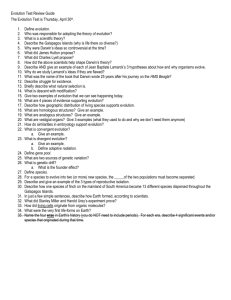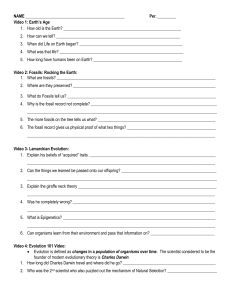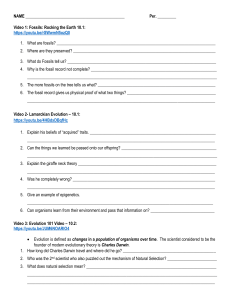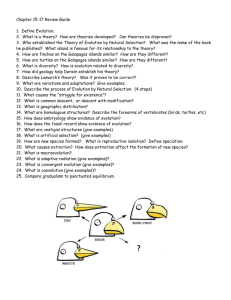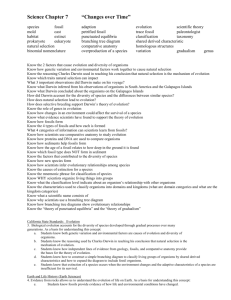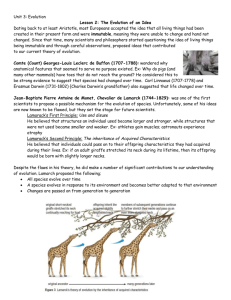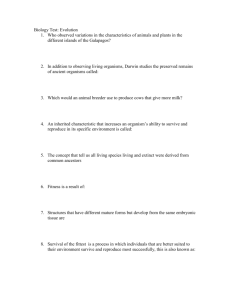Chapter_6_Study_Guide
advertisement
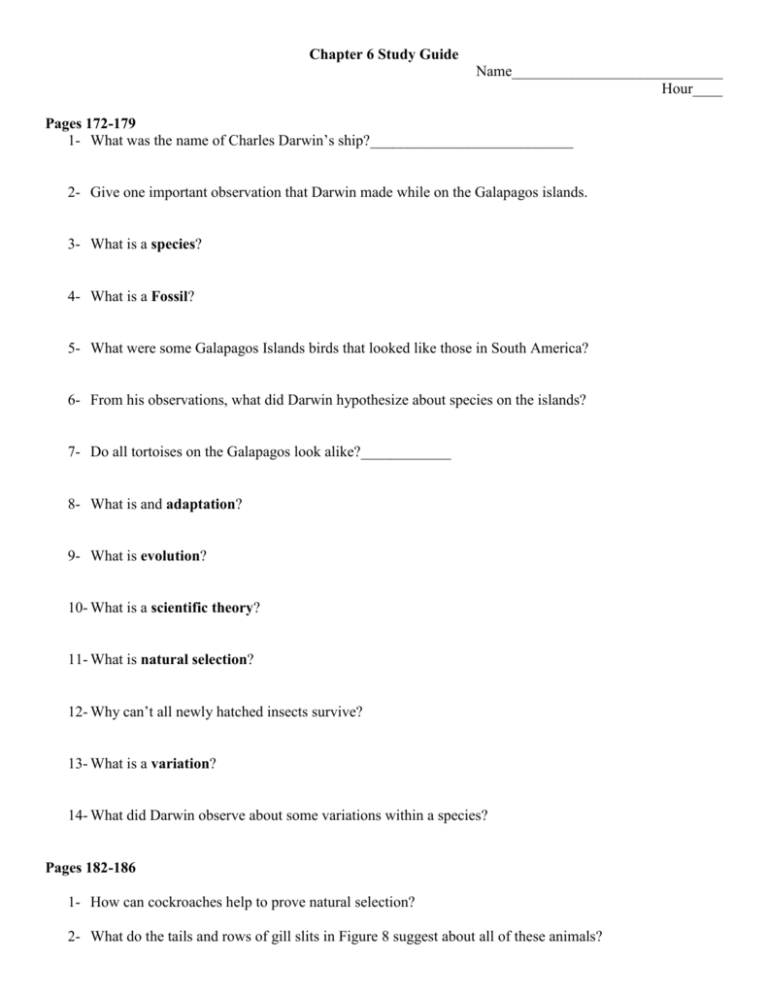
Chapter 6 Study Guide Name____________________________ Hour____ Pages 172-179 1- What was the name of Charles Darwin’s ship?___________________________ 2- Give one important observation that Darwin made while on the Galapagos islands. 3- What is a species? 4- What is a Fossil? 5- What were some Galapagos Islands birds that looked like those in South America? 6- From his observations, what did Darwin hypothesize about species on the islands? 7- Do all tortoises on the Galapagos look alike?____________ 8- What is and adaptation? 9- What is evolution? 10- What is a scientific theory? 11- What is natural selection? 12- Why can’t all newly hatched insects survive? 13- What is a variation? 14- What did Darwin observe about some variations within a species? Pages 182-186 1- How can cockroaches help to prove natural selection? 2- What do the tails and rows of gill slits in Figure 8 suggest about all of these animals? 3- What are homologous structures? 4- Based on DNA evidence, are dogs more closely related to wolves or coyotes? __________________ 5- What is a branching tree? Pages 189-197 1- How do most fossils form? 2- What are the 3 main types of fossil (look for the blue type) _______________, _______________, ________________ 3- In relative dating, which rock layers are the oldest? ____________________ 4- Does relative dating tell the exact age of a fossil? ____________ Explain. 5- How can scientists find the exact age of fossils? 6- What does extinct mean? 7- (pg 194-195) Which Era are we currently in? 8- What is the difference between gradualism and punctuated equilibria? For the Quiz , make sure you . . . Can define: Adaptation, evolution, natural selection, variation, homologous, extinct. Gradualism, punctuated equilibria Can explain how adaptations help an organism fit its environment Understand pieces of evidence that support the theory of evolution Understand the importance of variations within a species Can explain the forces that drive natural selection
